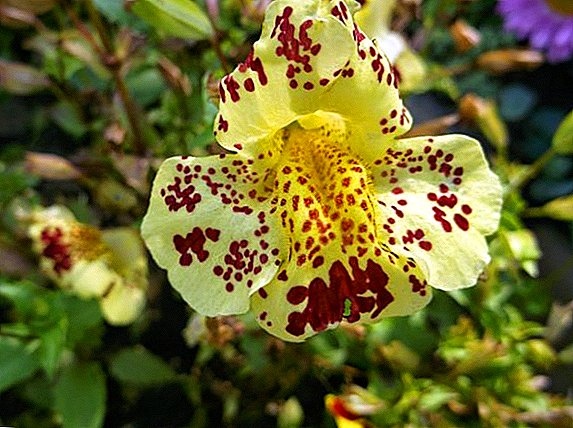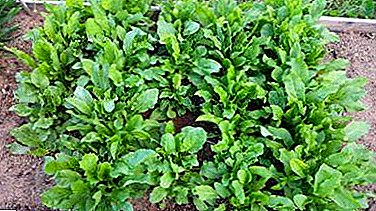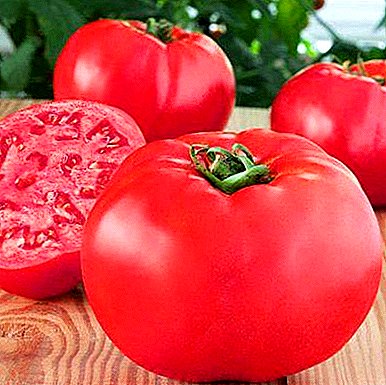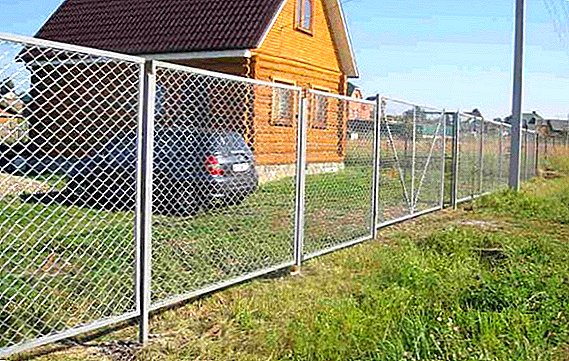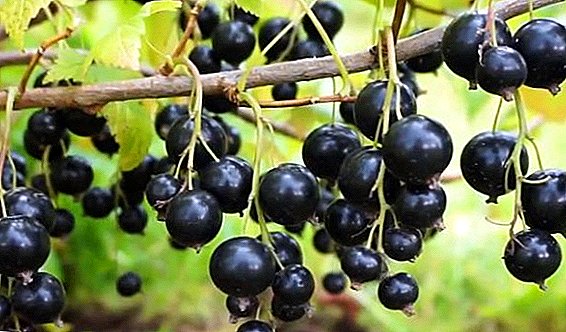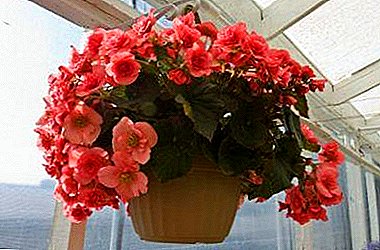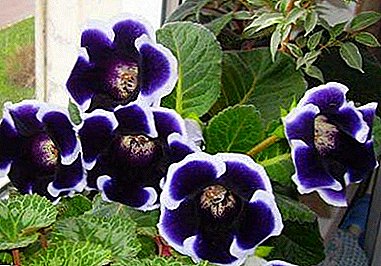 Strawberries, or strawberries - an early juicy and fragrant berry - loved by both children and adults.
Strawberries, or strawberries - an early juicy and fragrant berry - loved by both children and adults.
The arrival of summer is expected, in particular, because of the plenty to be fed up with this delicacy.
In addition to excellent taste, strawberry also brings great benefits to the human body - it is a source of a whole complex of vitamins, trace elements and fiber.
Did you know? Strawberries have a number of beneficial properties, in particular, sweat and diuretic, immunomodulating, antibacterial. It improves appetite and helps dissolve kidney stones. Due to the content of folic acid is useful for pregnant women, vitamin C is indispensable for children. In addition, the berry is an antioxidant and aphrodisiac.
To obtain a generous, tasty and healthy harvest, the plant needs fertile soil. However, not every owner of the dacha can boast of micronutrient-rich earth. In this case, it must be fertilized. Moreover, this should be done correctly, since excessive fertilizers and improperly introduced fertilizers can harm the berries - lead to growth inhibition, slow down the development of the plant, and sometimes even lead to its death. In this article we will focus on the important points of strawberry feeding in the fall. 
Top dressing strawberries in autumn: when to start
Despite the seemingly whimsicalness of this berry, growing and caring for it will not be difficult even for novice gardeners. It is important to know that this process rests on "four pillars":
- soil care (loosening and destroying weeds);
- watering;
- top dressing;
- prevention and treatment of diseases and pests.
Strawberries are recommended to be fed three times per season: in the spring, summer and autumn periods. An autumn top dressing is brought in so that the berry bushes depleted by fruiting have time to recover before the beginning of winter and are able to easily and easily survive the winter.
Since after the harvest, flower buds are formed on the berry crop, the next year's fruiting depends on whether the fertilizer was applied under strawberries in the fall. In addition, if the berry was planted only this year, the autumn feeding will be her first. Therefore, it is very important to carry it out without violations, in order not to harm the future fruiting.
Did you know? Fertilization can lead to an increase in strawberry yield by 20-30%.Fertilizing strawberries is best in September. Although the term will depend on the varieties of berries. Some of them require supplements in October-November. However, in any case, fertilizer can be applied only at the end of fruiting.
In order to figure out what kind of fertilizer is needed for strawberries, we suggest you use the tips in the following sections.
The best way to fertilize strawberries
Experienced gardeners, through trial and error, apply various substances and their combinations to top dressings until they achieve the desired result and select the best and effective fertilizers for their strawberries. Organic, mineral and mixed compounds are used. Below you will find a few tips on how to prepare this or that fertilizer and how to apply it to the garden bed with berry crops.
How to cook organic fertilizer
Most often for feeding in the autumn strawberries prefer organic fertilizers, which, in addition to feeding the plant itself, help the soil under it to better pass air and retain the necessary moisture. This may be feeding with mullein, chicken manure, slurry, green fertilizer, wood ash. 
To use mullein, it is necessary to prepare an infusion. To do this, it is diluted in the amount of 1 liter with 10 liters of water and infused for several days. Before use, half a glass of wood ash is mixed.
Infusion slurry prepared at the rate of 1 l per 8 l of water. The consistency of the infusion should resemble thick sour cream.
Chicken droppings Fresh use can not under any circumstances - it will kill the plants. It is either well diluted, or do the hood. And then they pour water between the rows.
Wood ash sift and scatter between the beds and rows. Consumption: 150 g / 1 sq. M. m
Also as a fertilizer for strawberries in the fall, you can use fresh manure. However, it is necessary to fill it only between the rows so as not to burn the roots of the plants. In winter, he will perepret and will be able to feed the earth with nitrogen, besides additional mulching is not needed.
From green fertilizer The stems and chopped leaves of lupine, which are cut between the rows, immediately after flowering, have shown good results. Also use bean green manure and any mowed grass. Top green fertilizers sprinkled with a small layer of soil or sand. 
There is another recipe for bio-fertilizer, which is used twice a season - during periods of bush formation and after fruiting. For feeding, use nettle (1 bucket), filled with warm water and infused for several days.
Top dressing by mineral structures
Sometimes organic fertilizer is not so easy to get hold of at their summer cottage. Then resort to the use of mineral compounds. Allowed as sprinkling granules and powders of potash and phosphate fertilizers between the bushes, and breeding them in water.
In the latter case, you must adhere to the proportions:
- for potassium salt: 20 g / 10 l of water;
- for superphosphate: 10 g / 10 l of water.
Important! Watering with mineral fertilizers should be carried out only between the rows. The ingress of solutions on the leaves of plants is not allowed.For root dressings mineral fertilizers for strawberries in the fall prepare a mixture of nitrophoska (2 tablespoons), potassium salt (20 g), water (10 l). Consumption: 1 l per 1 bush.

Two days after fertilization, the soil under the bushes is mulched with sawdust, leaves, needles or peat.
It is also possible to use fertilizer. "Autumn Kemira". However, it is important to know that it is dangerous for the plant to get the drug inside the outlet. Consumption: 50 g / 1 sq. M. The term of application is the beginning of September.
Mixed fertilizers
Mixed fertilizers will also be useful for garden strawberries. So, apply a mixture of solution of mullein (1 l / 10 l of water), superphosphate (2 tablespoons), wood ash (1 cup).
Another way to: in 10 l of water dissolve the nitroamplate (2 tablespoons), potassium sulfate (30 g), wood ash (1 cup). The solution is well stirred to a state of homogeneous mass. Consumption: 250-500 ml / 1 bush.
Also use ready-made complex fertilizer for strawberries, which can be purchased in specialized stores. 
Features of the autumn feeding: how to fertilize strawberries
If you are planting an autumn strawberry planting, then you need to bring in the planting holes. a mixture of humus or well-rotten compost (3 kg / 1 sq. m), potassium chloride (10 g), superphosphate (30 g).
After this procedure, the soil under the bushes should be covered with dry grass or compost mulch. When planting in this way, strawberries will not need fertilizer until the fruiting period.
In the event that you use mineral compounds for fertilizing strawberries that have already produced the strawberries, you can feed the berries twice before winter. The first time is at the beginning of September, for example, “Kemira Autumn”, the second time - at the end of October, after cutting the leaves. Apply potassium humate or superphosphate.
After any dressing strawberry bushes must be plentifully watered.
Important! Liquid feeding should not be made later than the last week of September. Otherwise, the roots of the plant can not tolerate frost.

How to prepare strawberry bushes for winter
In addition to autumn dressings, it is important to carry out some actions to care for strawberries, in order to prepare it for a safe winter. These include pruning leaves and soil mulching. In addition, in the autumn, you should not stop watering the plants, because in September there is often hot and dry weather. And, of course, it is necessary to eliminate all pests and cure diseases, if they appear on the plant, and also to remove the diseased and rotten organs of the plant.
There are discussions about whether it is advisable to prune strawberry leaves. Opponents of circumcision claim that in this way a person interferes with the natural development processes of the berry crop, which only cause harm. One of their arguments is that strawberries with healthy leaves can survive the winter without shelter, as they are the ones that will protect the kidneys from frost. Proponents of this procedure argue that pruning can increase yields next year.
If you decide on this step, then you need to know how to properly pruning, so as not to harm the plant. After fruiting, strawberry leaves are cut with scissors or shears. Better to do it in August. Cut only the leaf plate. It is important to leave the stems intact so as not to accidentally damage the growing point. All antennae are also subject to removal.
Some owners of strawberry beds simultaneously with pruning produce loosening and hilling bushes.
Next, the beds are abundantly watered and mulch the soil. Peat, conifer needles, dry leaves, and straw are used as mulch.
Important! Do not get rid of weeds in the fall, it is better to leave this procedure until spring. During this period, they are no longer dangerous for strawberries, but when they are removed, you can damage the roots of plants that do not have time to recover by winter.Whether to use strawberry shelter before winter frosts will depend on the climatic conditions in which you live. If you usually have winters with heavy snowfall, then the snow cover for the berries will be enough to survive the cold.

With little snow and frosty winters, strawberries should be covered. To do this, use branches of coniferous trees, straw, dry leaves, tops, or special covering materials (agrotex, spandbod, etc.). Covering materials it is desirable to choose a density of 60 g / sq. m and use for their arc tension. When choosing a natural shelter, preference should be given to lapnik, which is well breathable and does not allow strawberry bushes to rot.
It is important to remember that the shelter should be carried out only after the first frost. This will allow the plant to harden.
Knowing what fertilizers to feed strawberries and how to help her survive the winter, you can expect that if you follow these recommendations, the berry will certainly thank you for a rich, tasty and fragrant harvest next season.



